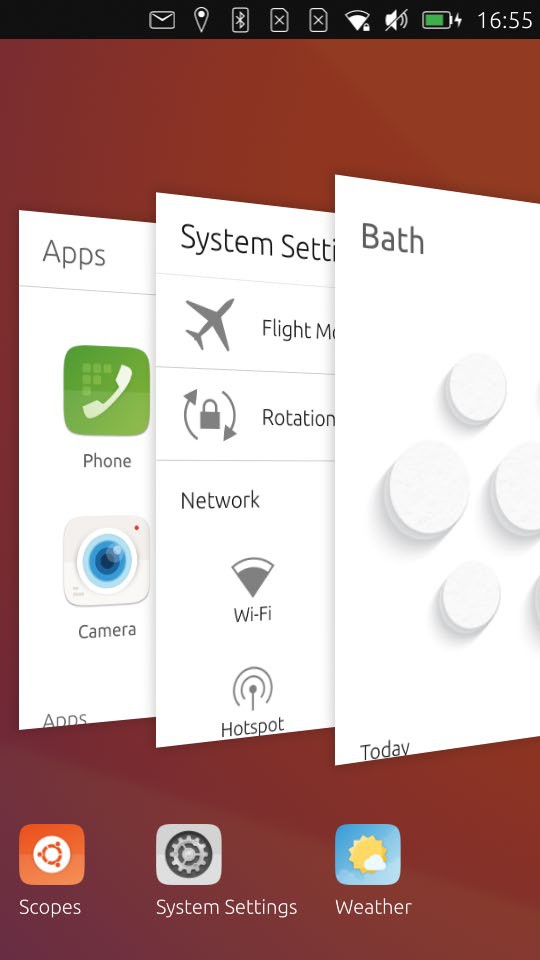Linux on your phone
Install GNU/Linux
Touch base with Ubuntu Touch or branch out into PostmarketOS.

Ubuntu Touch has a novel interface. A long swipe left brings up this handy overview.
Early Nokia smartphones (notably the classic N900 from 2009, see over there on the right) shipped with a Linux-based OS called Maemo. Maemo was largely based on open source projects, but included some proprietary code. The community was key to developing it, under Nokia’s stewardship, and it fuelled the vision that one day our phones could run free software without compromise. That may not have fructified yet, but there is hope. Today, long after Nokia largely abandoned Maemo (being forced by Microsoft to sell Windows Phones in 2011), there is still a community dedicated to Maemo. Namely Maemo Leste, which runs an upstream kernel and is based on Devuan (the distro that most has it in for Systemd).
You may not be interested in running Linux on hardware quite as old as the N900, but our FOSS-onphones story doesn’t end there. That utopian vision was rekindled with the Ubuntu Touch project, which promised to bring Ubuntu to mobile devices, smart TVs and pretty much anything MC Hammer could touch. This was serious news in 2011, and Canonical even attempted a massive crowdfund for the Ubuntu Edge phone in 2013. But, alas, it all came to naught. In 2017, Ubuntu Touch was shelved (alongside Ubuntu’s characteristic Unity desktop) as interest dwindled and the company sought to make itself more appealing to investors (and fans of the Gnome desktop).